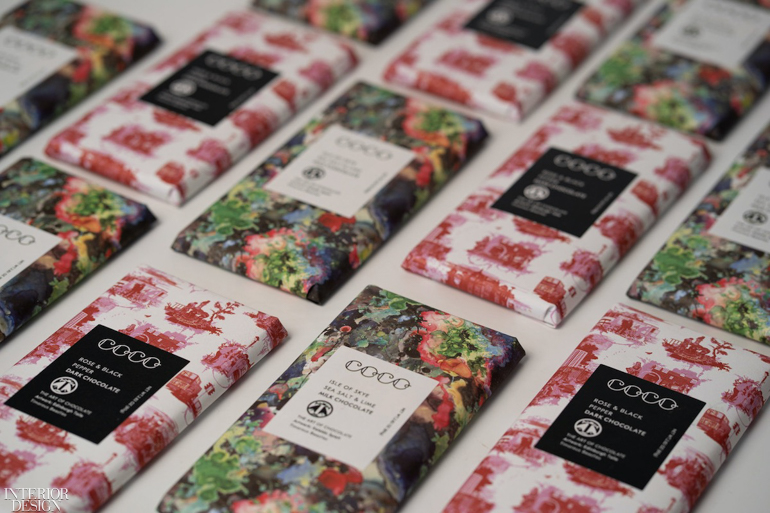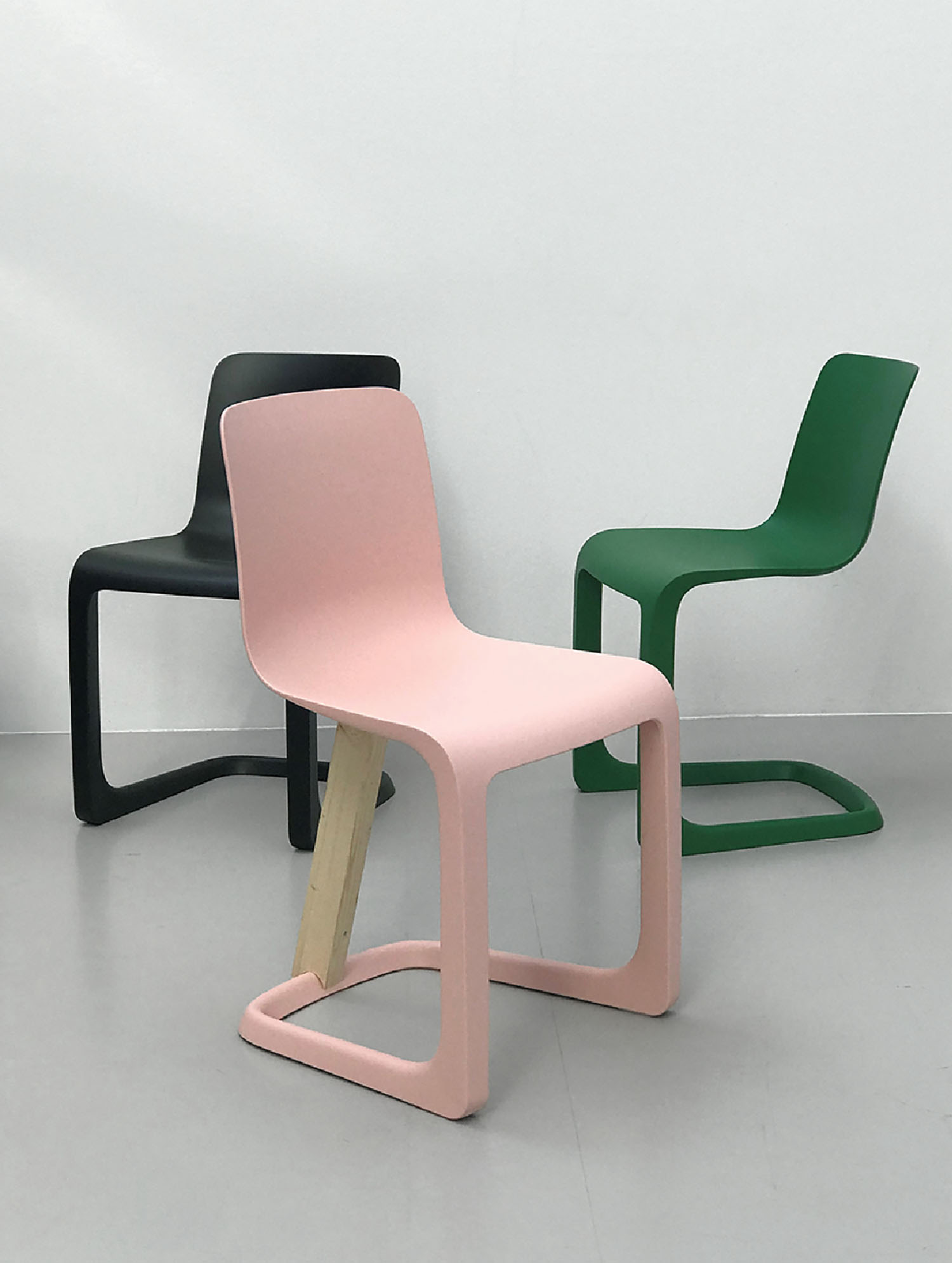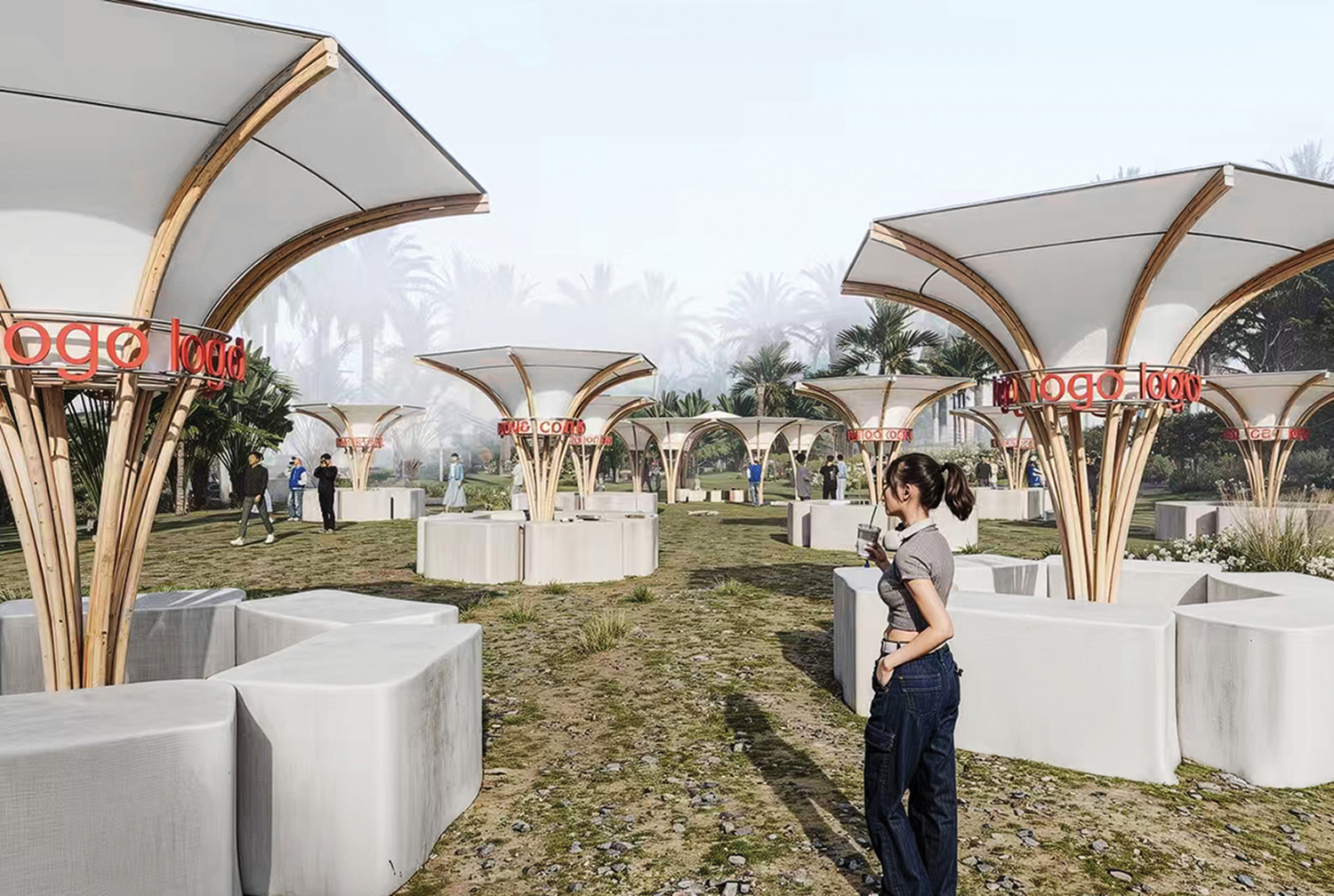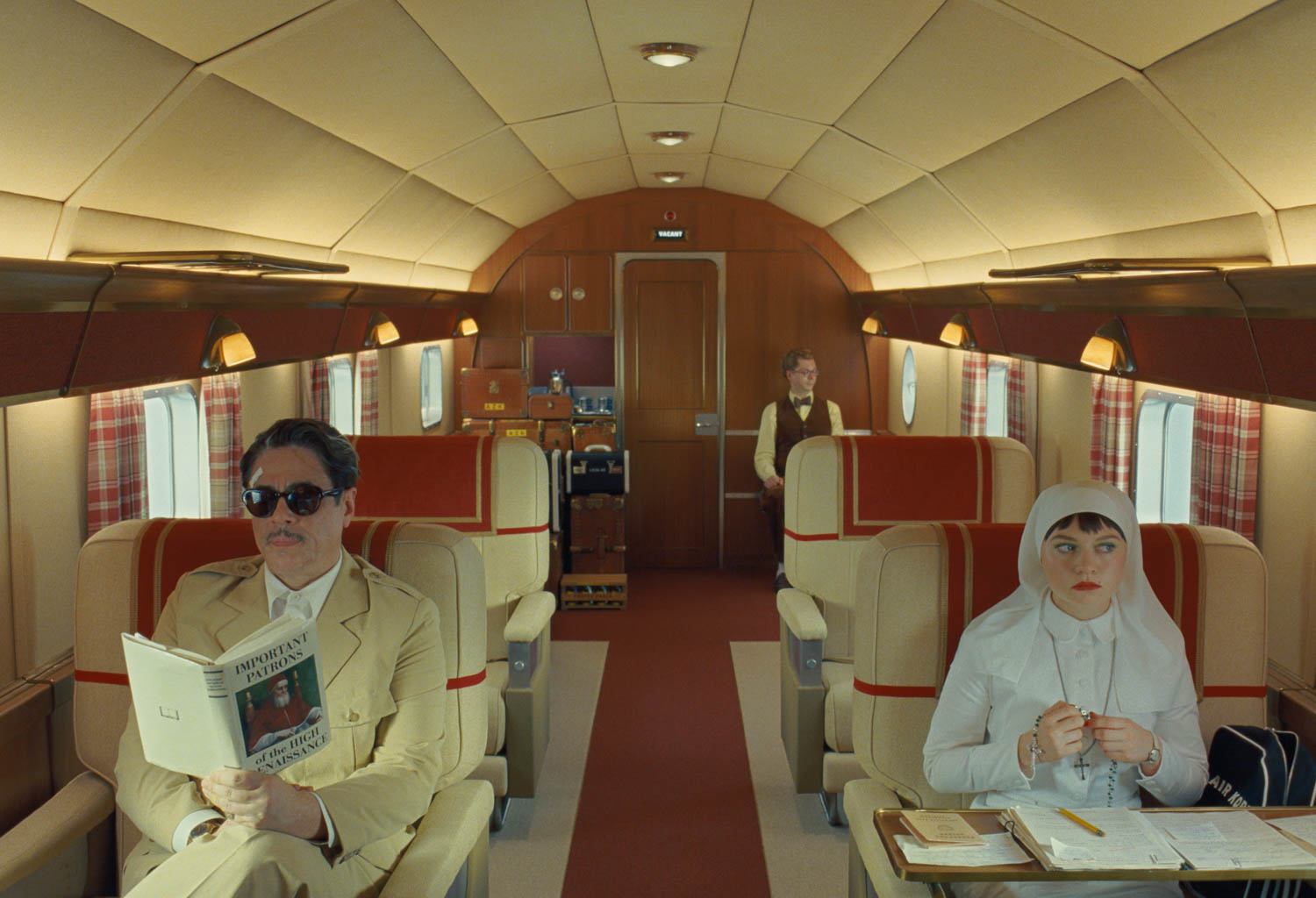10 Questions With… Alistair McAuley and Paul Simmons of Timorous Beasties
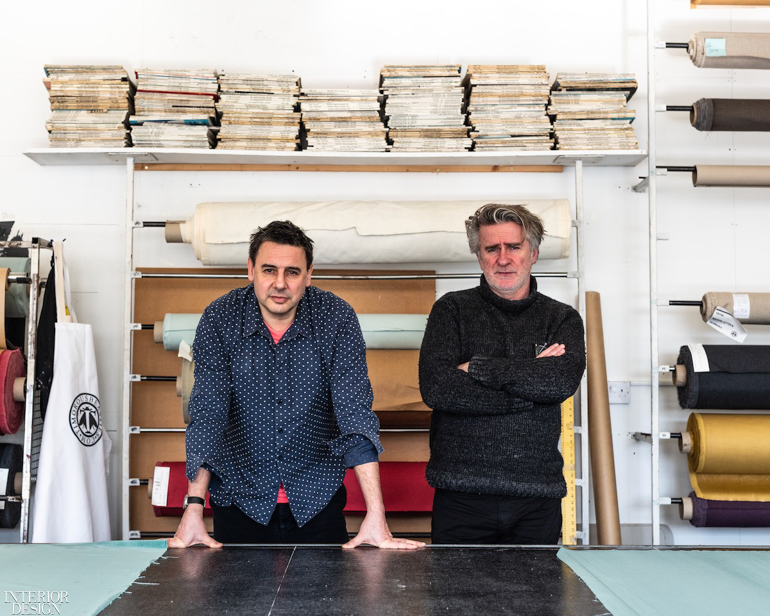
Unexpected patterns in intricate detail tease, tantalizingly, at otherworldly escape in the hand-printed and digital textile and wallcoverings by Timorous Beasties. Alistair McAuley and Paul Simmons met while studying at The Glasgow School of Art, before founding their design studio, also in Glasgow, in 1990.
Today Timorous Beasties has showrooms in Glasgow, London, and Berlin and the studio’s patterns, with a tendency to focus on nature, can be found in residential and commercial interiors around the world—as well as the permanent collection of the Cooper Hewitt, Smithsonian Design Museum. Hospitality giant Hyatt Hotels Corporation, footwear and apparel brand Nike, and leatherworkers Bill Amberg Studio are among names on a high-profile client list, while the duo’s patterns are known to emerge in unexpected places such as a golf shirt, a food truck, or the packaging for a chocolate bar. “We play to our strengths and to the bits that we’re interested in on a personal level and get on with it,” says Simmons, after describing the studio as a “dynamic animal,” which gets its name from a phrase in Robert Burns’ poem “To a Mouse.” Adds McAuley, “I might be more interested in the bespoke stuff, and Paul more interested in the collections, but we’re still completely involved together.”
During time at home, given the pandemic, McAuley is focusing on pen-and-ink sketches while Simmons is concentrating on using his left hand after a car knocked him over and broke his right wrist. Interior Design chatted with the duo to learn more about golf collaborations that seem to emerge despite a dislike for the sport, a recent collection that celebrates the ocean, and why one of the two founders lives in a pattern-free home.
Interior Design: You recently did fabric design for Nike Golf. How did that project come about?
Paul Simmons: We only seldom work in fashion but around 10 years ago we did a limited-edition waterproof jacket and T-shirt for Nike, using our Iguana woven fabric. Then they rang up about a big golfing championship happening in Portrush, Northern Ireland. We designed a fabric based on the landscape and legends in that part of the world and included silhouettes of golfers and golfing paraphernalia as well as sea-gods and other mythical creatures. It was an unusual kind of collaboration, though these odd-ball projects come in quite regularly. Actually, a famous golfer was wearing our T-shirt. I can’t remember his name, but he had long hair…it’s kind of easy to standout in golf. Just loosen your top button and you’re a renegade. Though the irony is we both hate golf.
Alistair McAuley: Oddly enough, we then ended up doing a project for the Loch Lomond Golf Club, a quite high-end course. We did the interior for one of their lodges in 2018, working with a friend of ours, Glasgow-based Jim Hamilton, who is creative director of interior design studio Graven. He’s a friend from school, and we have worked on projects with him for the past 30 years.

ID: What else have you completed recently?
PS: For an exhibition during London Design Festival 2019, we upholstered a big bent-steel button couch from the 1980s in a printed leather that we did in 2018 with Bill Amberg. The print is kind of sandwiched, like a butterfly squished together. In March, we launched the Ocean collection, a celebration of marine magnificence. It consists of designs—such as the TB Seaweed Column wallpaper—that incorporate seaweed and ocean-life imagery printed on fabric made from recycled plastic.
ID: You recently opened your third showroom, in Berlin. Why Berlin?
AM: Berlin sounded just right for us, similar to Glasgow in many ways—cultural, creative, and with a willingness to invest in something new. But after the chaotic crash of 2008, we had to shelve that idea. About three years ago, prompted by Brexit but more positively just about wanting to grow stronger, we started looking out for a Berlin place more earnestly. Then we were featured in an article in Glasgow’s The Herald, which spoke about our desire to open there. Douglas Gordon, an old art school friend of ours, happened to see it. He then gave us a call to say he had an empty gallery in a building he owns in Berlin. In addition to Douglas, the building was already populated by some really interesting designers and artists—Konstantin Grcic, Thomas Demand, various other sculptors, as well as a couple of book shops…and, oddly, a golf shop. We took it immediately as it felt right.
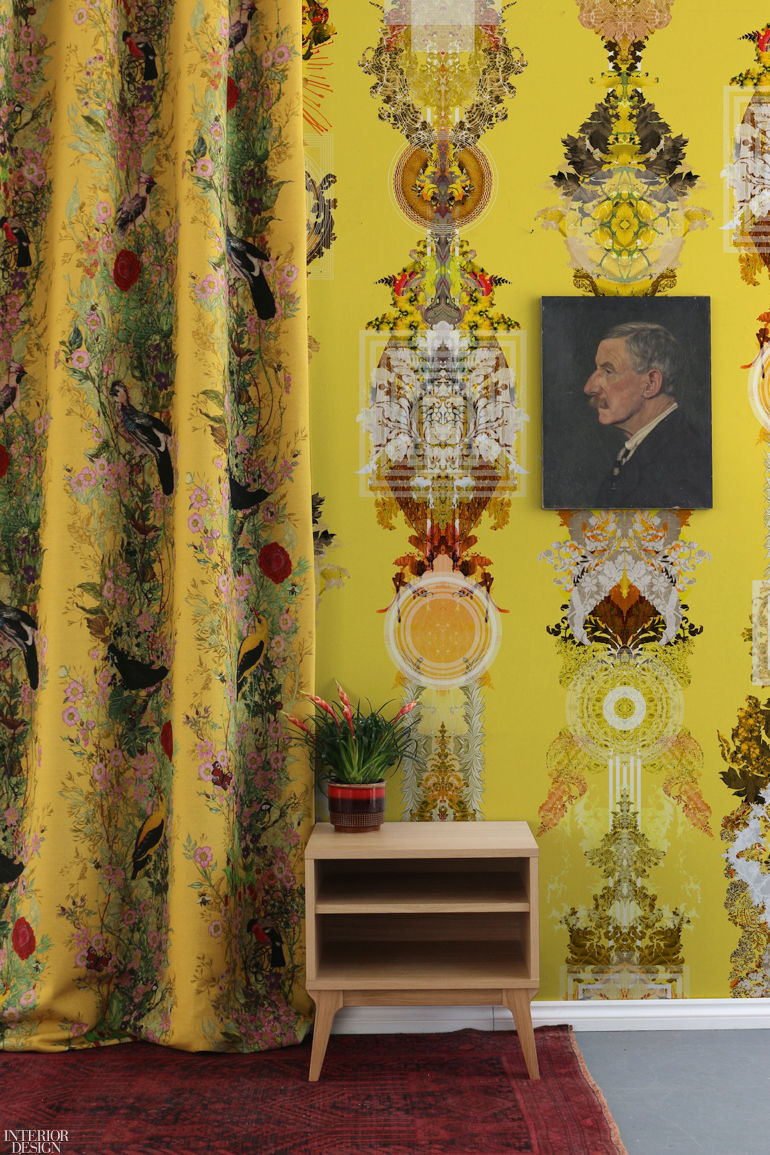
ID: What’s upcoming for you?
PS: It’s all a bit crazy with the Coronavirus—and we thought Brexit was bad enough. However ongoing projects at the moment are with independent bicycle company Tokyobike in Berlin and porcelain manufacture Fürstenberg, also in Germany. These are collaborative and more about experimentation, rather than full-on production.
AM: We’re also working with Abell Nepp Architects on some recreational areas for King’s College Cambridge. This project is a development of their crest for multiple applications and it’s just at the drawing stage, so on the plus side it’s good to get proper time to do that. It’s the same for more work we have underway for Hepple Gin, a gin brand—we’re back to the core pen-and-ink drawings.
ID: Can you describe a particularly significant project in your history?
PS: After we were shortlisted for the Designer of the Year competition by London’s Design Museum, we were commissioned by foundation the Welcome Trust to design a window display at their main building on Euston Road in London. The display was to be very large, had to change between night and day, and was intended to engage people on many levels and from many angles—from people walking past to people passing on buses. Our solution was patterns from lampshades that varied in scale. The double helix pattern of DNA could be seen from a distance within the lamps. Other smaller patterns also appeared, showing cells, mosquitos, and other biological themes that could be appreciated up close. The lamps were printed with opaque inks, so that at nighttime they looked very different, lighting up with dark silhouettes. This project involved us creating a lace out of giant mosquitoes and other medical instruments, as well as researching and working with other companies. We also received access to the Welcome Trust’s incredible historical medical archives.
Maybe ‘windows’ sounds like a small project, but actually they’re massive—more than 80 feet long, up to 20 feet high. At the time, this project was something really different for us because we were presented with a very open brief and a proper budget. It led on to loads of different things.

ID: In what kind of home do you live?
PS: I live in an old tenement building opposite a park in Glasgow with my Irish wife and three children. It’s a typical Victorian building with high ceilings on two floors. There’s very large leather Desede sofa from the 1970s in five sections that makes up an L-shape and the kids love running and climbing all over it. I do have some of my own hand-printed paper in my home, but only on a few walls. Actually, the print was from a batch that was really messed up, but I love it.
AM: I live in a pattern-free environment. I like plain, simple living and don’t clutter my place with pattern and stuff like that—I keep that for my workspace. Though actually, I recently got married, and my wife lives 175 miles away from where I do, so I now go between Glasgow and Glenelg, in western Scotland. Her house, like mine, is also void of recognizable pattern.
ID: How do you think your childhood or formative years influenced your
design thinking?
AM: My parents came from a very working-class background, and my father was a shipyard worker. The school that I went to wasn’t the best, shall we say, in terms of art education. Going from that to art school and meeting all the people that you meet there—that utterly changes how you look at things, right? My mother, however, loved pattern. I grew up surrounded by these late 1960s and 1970s patterns everywhere. The curtains were different from the sofa, which was different from the carpet, which was different from the walls. In fact, three or four of the walls were different from each other. There wasn’t anywhere where you didn’t find pattern. There was a feeling that it wasn’t, shall we say, beautifully edited. It wasn’t exquisite. These days, wallpapers turn up all the time in which I think: My God, my mother actually had that! Recently, my parents passed away and we had to strip the house in order to sell it. There were so many carpets. Every 10 years or so a different layer of pattern–this wasn’t a culture for getting rid of the previous carpet. You merely put the new carpet over the top of the last.
PS: My grandparents on my father’s side were quite eccentric. My grandfather was a slight insomniac and would stay up and read all night. I used to come down and find him, sitting there in his chair in the living room, surrounded by all these books. Piles were stacked everywhere in this tiny council house. I mean everywhere, it was quite surreal—up the steps, on top of the piano, on top of every surface. In the room that we stayed in as kids, the floor was caving in because of all the books. They were probably way too intellectual or hardcore reading for me then, but I used to look through those with illustrations, many with quite old engraving-type images. I think this is where I got inspired by the printed image.

ID: Is there a person in the industry that you particularly admire?
PS: Thomas Heatherwick, because he is a maverick, and not afraid to try things out. Too many designers don’t take risks.
ID: What are you reading?
PS: I’m reading “Bad Boy: My Life On and Off the Canvas,” a biography by Eric Fischl, the painter, about himself. I was looking at it from the outside, so it’s quite interesting reading about an insiders perspective of the art scene of the 1980s.
ID: Do you have a secret you can share?
PS: Once in a blue moon, I’m partial to a rare cigar. Turmeaus Cigars & Whisky is in Shepherd Market on London’s Mayfair border…There you can smoke them inside the shop.
Read next: 10 Questions With… Thomas Heatherwick

